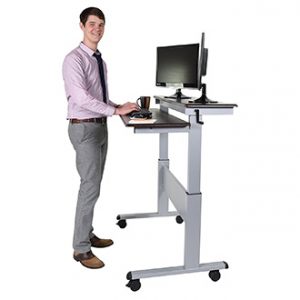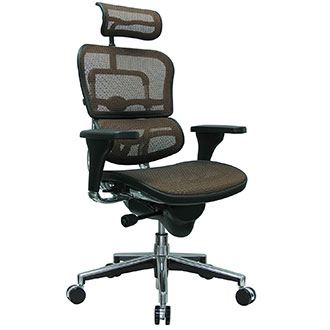A standing desk, for those who’ve missed the revival of the craze, is not a desk that stands, but a desk that allows you to work at it while you stand. For most of history, desk work has been limited to those sitting, with a few notable exceptions along the way. But for a number of reasons, standing desks are making a strong comeback, with a host of purported benefits.
To help you make the decision of whether you should be busy at a standing workstation or stick to your conventional chair, we’ve put together a list of pros and cons so you can figure out if it’s meant for you.
Pros
- Health – The biggest advantage of standing desks that gets pushed is their health benefit. This is mainly from the value gained by standing instead of sitting. Sitting for extended periods of time can increase your risk for a number of health-related issues. By standing, you can reduce these risks.
- Metabolism – Standing helps keep your body more active, improving your metabolism and causes you to burn more calories than if you were just sitting.
- Attention – Many users of standing desks indicate how much their productivity has improved since switching from a sitting desk. This is mainly linked to the improved attention span when standing. Users feel more focused, and less likely to lean back and relax, losing focus.
- Back Pain – Many users of standing workstations cite a reduction in back pain since making the switch. This is mainly linked to the extensive time usually seated, and the poor resulting posture.
Cons
- Feet – The first thing that people mention, especially those who switched back to a sitting desk, is sore feet. Especially when first starting out, many people’s bodies aren’t used to supporting weight for such a long time. If you persevere though, your body will get used to this, and you will become far more comfortable while standing.
- Footwear – The sore feet and other symptoms may lead one to pick a more comfortable shoe, especially with a more supportive inner sole. Women users also rule out the wearing of high heels while working at a stand-up desk.
- Laptops – When using a standing desk, and trying to type and view the screen on a laptop, it can be uncomfortable. While seated, your elbows are bent comfortably, and working is easy, but while standing, the same position doesn’t work. This can be resolved with an external keyboard or screen, or you may find it doesn’t bother you, particularly if not doing much typing.
- Varicose veins – Resulting in the swelling of veins especially in the legs, it can be painful and dangerous if left untreated. There are several contributing factors to the development of varicose veins, but prolonged standing is one of them.

Standing desks are not for everyone; for every person who says a stand-up desk has improved their life, you will find those preaching the opposite. You need to decide what’s right for you. Also, keep in mind that you don’t have to, or may not be able to, make a complete switch. There are many options that allow you to sit or stand at different times, and this is perhaps the best way to benefit from the advantages of a standing desk, while minimizing the effects of the disadvantages.
In the same vain, standing desks are not all made equal. When you start looking for one you’ll find many different form factors, all with different features. If you feel that you want to try out a standing desk, you can kick start your search by checking out our list of the top 5 standing desks.

